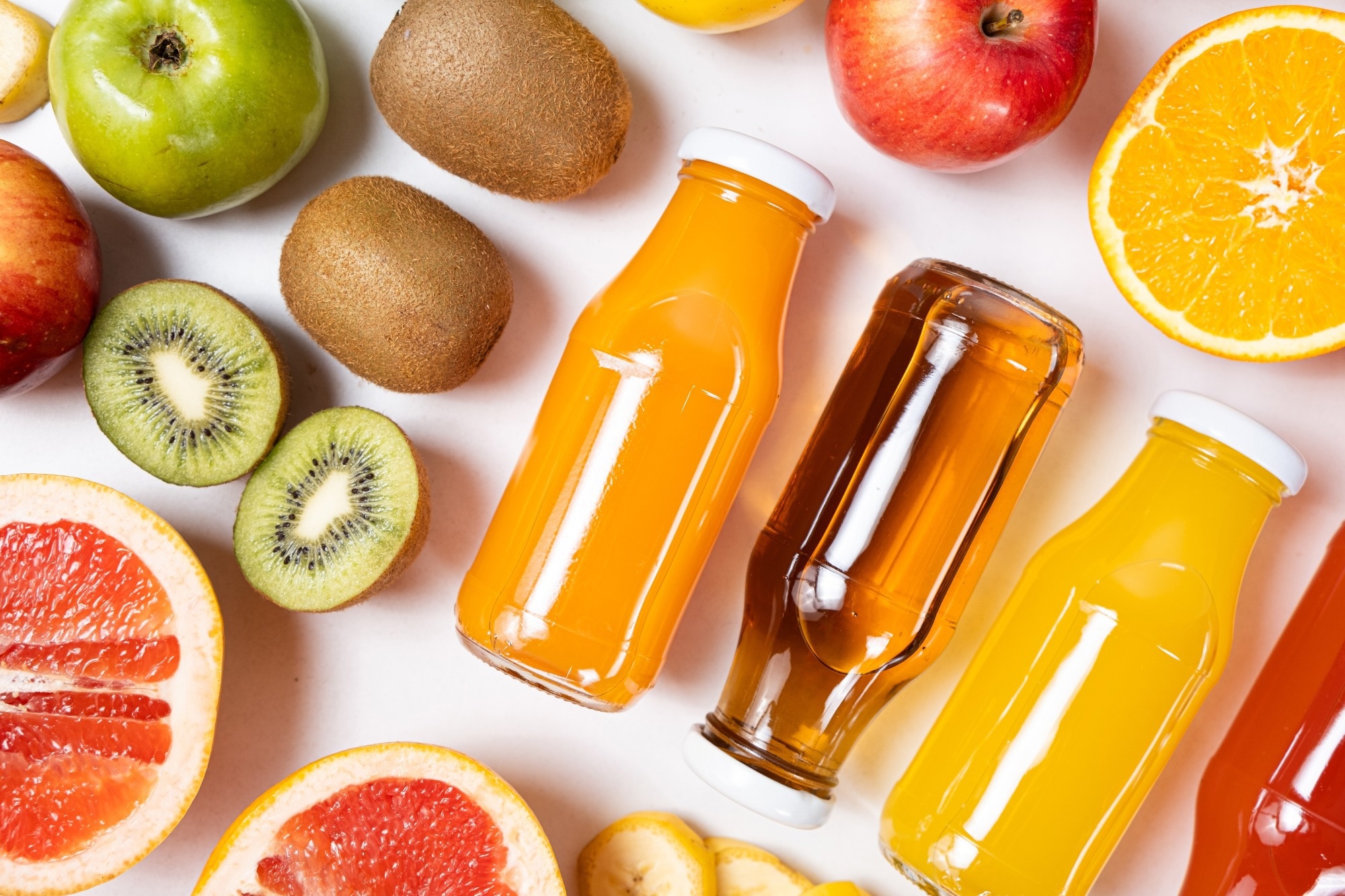New research reveals that enjoying fruit juice may help offset genetic risk for type 2 diabetes, at least for some Japanese adults, underscoring the promise of personalized nutrition in disease prevention.
Inverse association between fruit juice consumption and type 2 diabetes among individuals with high genetic risk on type 2 diabetes: The J-MICC Study. Image Credit: Garna Zarina / Shutterstock
In a recent study published in the British Journal of Nutrition, researchers investigated whether 100% fruit juice consumption influences the risk of type 2 diabetes (T2D) in Japanese adults.
T2D prevalence has steadily increased in Japan, affecting about 8% of adults. Adiposity, genetic predisposition, and age are the known drivers of T2D, with modifiable dietary factors being important targets for T2D prevention. Fruit juice is often studied in this context, albeit the findings remain inconsistent. Various studies have demonstrated null, positive, or inverse associations between fruit juice and incident T2D.
This heterogeneity reflects differences in juice type, a key distinction being between sugar-sweetened beverages and 100% fruit juice, and population differences in obesity, diet, genetic risks, and analytical approaches. Rapidly absorbable sugars could increase postprandial glucose levels, weight gain, and hepatic lipogenesis, elevating T2D risk, whereas fruit-derived micronutrients may improve insulin sensitivity and reduce oxidative stress, decreasing risk.
Polygenic risk scores (PRSs) summarize thousands of common T2D-related variants and estimate inherited risk. A growing body of evidence suggests that gene-diet interactions could attenuate or amplify nutritional effects on glycemic outcomes. However, no study has investigated fruit juice consumption across strata of T2D polygenic risk in East Asians, and whether fruit juice intake is associated with T2D among Japanese adults remains unclear.
About the study
In the present study, researchers evaluated the associations between fruit juice intake and T2D risk in Japanese adults. They used data from the Japan Multi-Institutional Collaborative Cohort (J-MICC) study, which recruited around 100,000 adults aged 35-69 from 2005 to 2014. It is important to note that this was a cross-sectional study, which examines data at a single point in time and therefore cannot establish a cause-and-effect relationship. Participants completed a questionnaire on sociodemographics, lifestyle, and medical history at baseline.
Anthropometric measurements were taken, and blood samples were collected at baseline. The International Physical Activity Questionnaire was used to assess physical activity. The Food Frequency Questionnaire was administered to estimate food intake. The questionnaire evaluated the consumption of 100% fruit juice across seven categories, which for primary analysis were grouped into “no intake” or “at least once weekly.”
The primary outcome was self-reported, physician-diagnosed T2D. In total, 14,068 J-MICC participants were genotyped. Two East-Asian polygenic scores for T2D were identified from the Polygenic Score Catalog: PGS002379 with 920,930 variants and PGS001294 with 3,496 variants. The primary analyses used PGS002379 as it had broader genomic coverage.
PRS was calculated for each participant and standardized to a Z-score. The Z-score was stratified into quintiles (high, middle-high, middle, middle-low, and low), with the top quintile being the high genetic risk group. Multivariate logistic regression models were used to estimate odds ratios and 95% confidence intervals for T2D. Model 1 was adjusted for participants’ age, sex, and site (or residential location).
Model 2 was additionally adjusted for hypertension, dyslipidemia, education, and family history of T2D. Model 3 was further adjusted for physical activity, alcohol and smoking status, and daily average sleep duration. In addition, the team investigated the effect of interactions between PRS and fruit juice intake on T2D. Finally, they assessed the association between fruit juice intake and T2D stratified by PRS quintiles.
Findings
The study included 13,769 participants, including 7,517 females. Of these, 814 individuals (267 females and 547 males) were diagnosed with T2D. Individuals with T2D were significantly older and had higher weight and height than those without T2D. Further, T2D subjects had longer daily sleep duration and lower physical activity than non-T2D subjects.
Alcohol intake, smoking, hypertension, and hyperlipidemia were more prevalent among T2D subjects than non-T2D subjects. Notably, more T2D subjects quit both smoking and alcohol consumption compared to those without T2D. Participants who consumed 100% fruit juice had significantly lower odds of T2D than those who did not. A more detailed analysis showed a dose-response pattern, where higher consumption was associated with lower odds of T2D.
This association was sustained after additional adjustment for confounding variables (models 2 and 3). After finding statistical evidence of a gene-diet interaction, the key finding emerged from a stratified analysis: T2D was significantly lower only in fruit juice consumers with a high genetic risk, with no significant association found in those with low or moderate genetic risk. However, the study’s design means it is also possible that this association could be due to reverse causation, where individuals may have reduced their fruit juice intake after receiving a T2D diagnosis.
Conclusions
Taken together, the findings suggest an inverse association between T2D and 100% fruit juice intake among Japanese people with high genetic risk for T2D. Notably, this association was not observed in people with low genetic risk for T2D, strengthening the suggestion of potential interactions between dietary factors and genetic predisposition. Given the study’s limitations, particularly its cross-sectional nature, these findings do not prove that fruit juice prevents diabetes. Further longitudinal studies are needed to clarify whether this association is causal and to identify the specific genetic variants that may modulate the metabolic response to fruit juice constituents.
